-

Mountain Kotanto with Antique Fittings
The core of this project is a charcoal-forged blade, water quenched with clay and sharpened with waterstones, an outdoor knife that has the foundation of the Japanese sword. The hamidashi mounting is in the rustic kura (蔵, storehouse) style and includes antique fittings from swords carried long ago. Satoyama are the managed forest areas that…
-

Itten Forest Tanto
Itten (一転, “eat..ten”) means a turning point or turn of events, as in a story or set of circumstances. It carries the idea of a sudden or unexpected shift, return, or change, and often means a complete turn around, in skateboard terminology this is known as a one-eighty (180°). This is the first hammer-finished full…
-

Koi-oshidori Field Kotanto
The core of this project is a charcoal-forged blade, water quenched with clay and sharpened with waterstones, an outdoor knife that has the foundation of the Japanese sword. The aikuchi mounting is in the rustic kura (蔵, storehouse) style and includes antique fittings from swords carried long ago. Satoyama are the managed forest areas that…
-
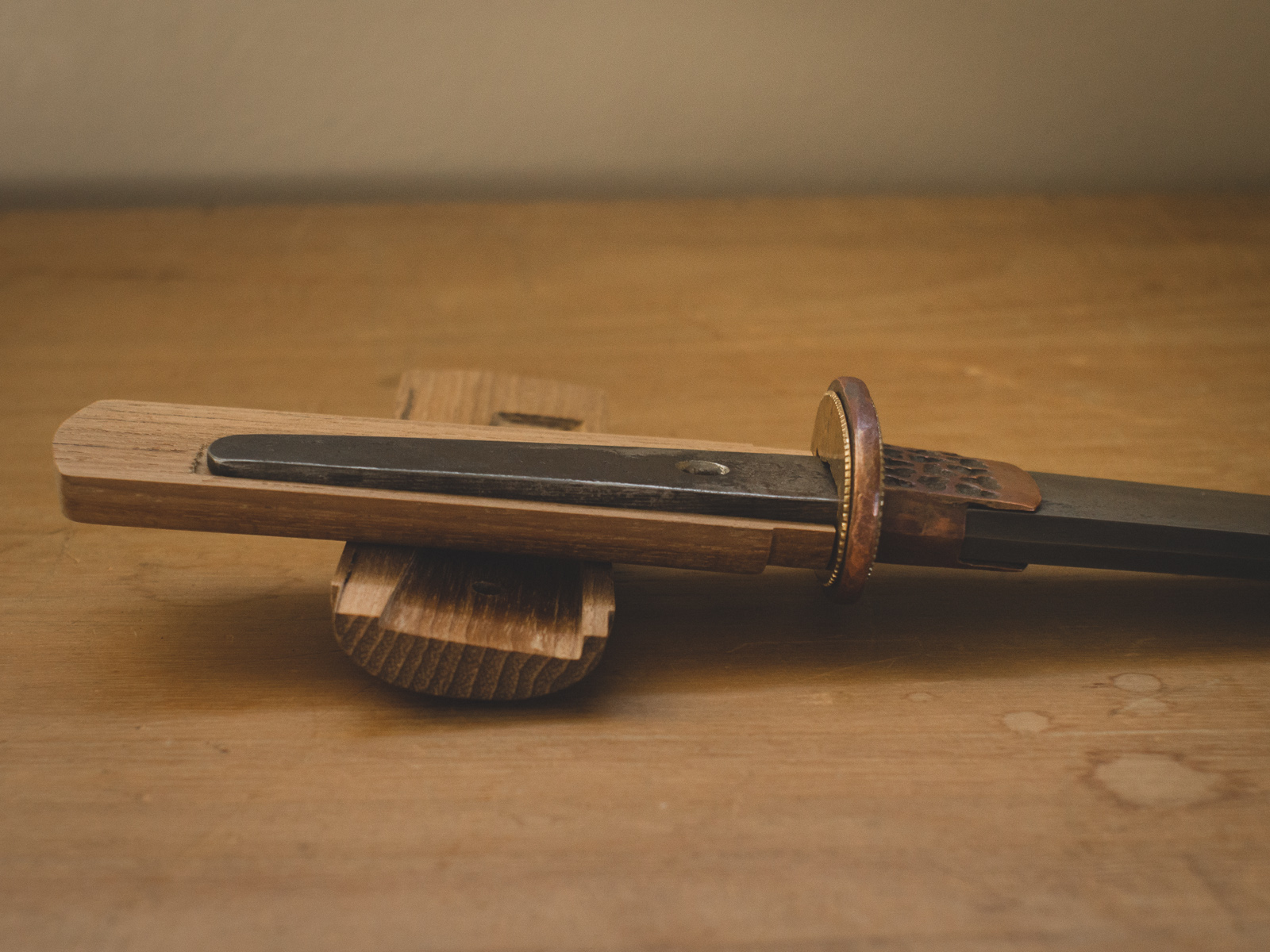
An Inside Look at Handle Geometry
A rare opportunity to compare the inside and outside geometry of a finished handle core. Historically an old tsuka would be split open for repair or adjustment or even re-purposing for a new blade, however a newly crafted tsuka is always glued together before the outside is shaped. In this unusual case the core was…
-

Sunnobi Mountain Tanto
Sunnobi tanto (寸延び短刀) are larger than ordinary tanto, with nagasa a sun or two above 1 shaku (sun nobi, “a sun longer”, from nobiru, to stretch or lengthen). Though there is some area of crossover with hira-zukuri ko-wakizashi and they may have sori similar to ko-wakizashi, the simplified difference would be that they are still…
-
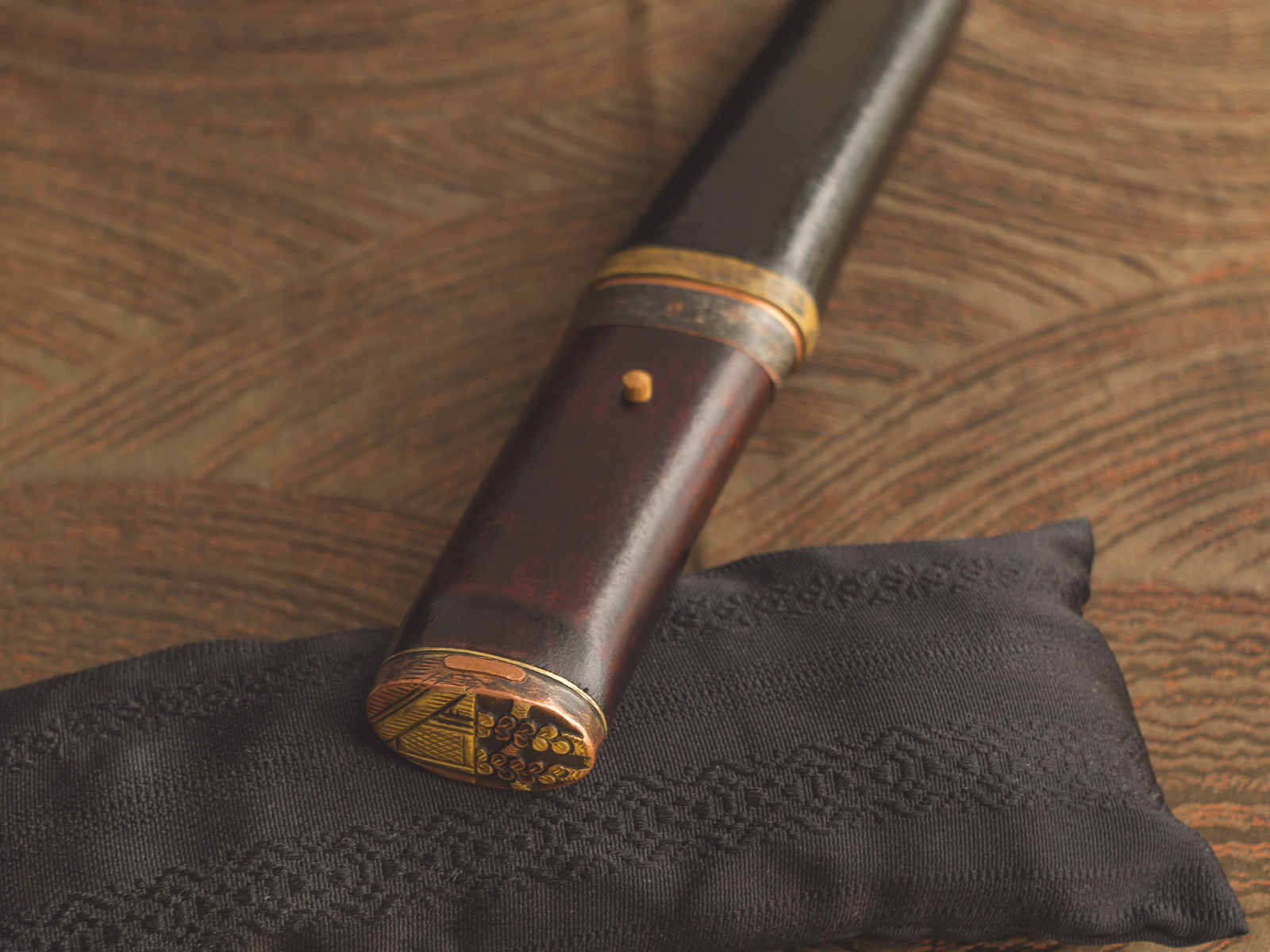
Field Kotanto with Antique Fittings
The core of this project is a charcoal-forged blade, water quenched with clay and sharpened with waterstones, an outdoor knife that has the foundation of the Japanese sword. The aikuchi mounting is in eclectic kura style and includes antique fittings made for swords centuries ago. Satoyama are the managed forest areas that border the cultivated…
-
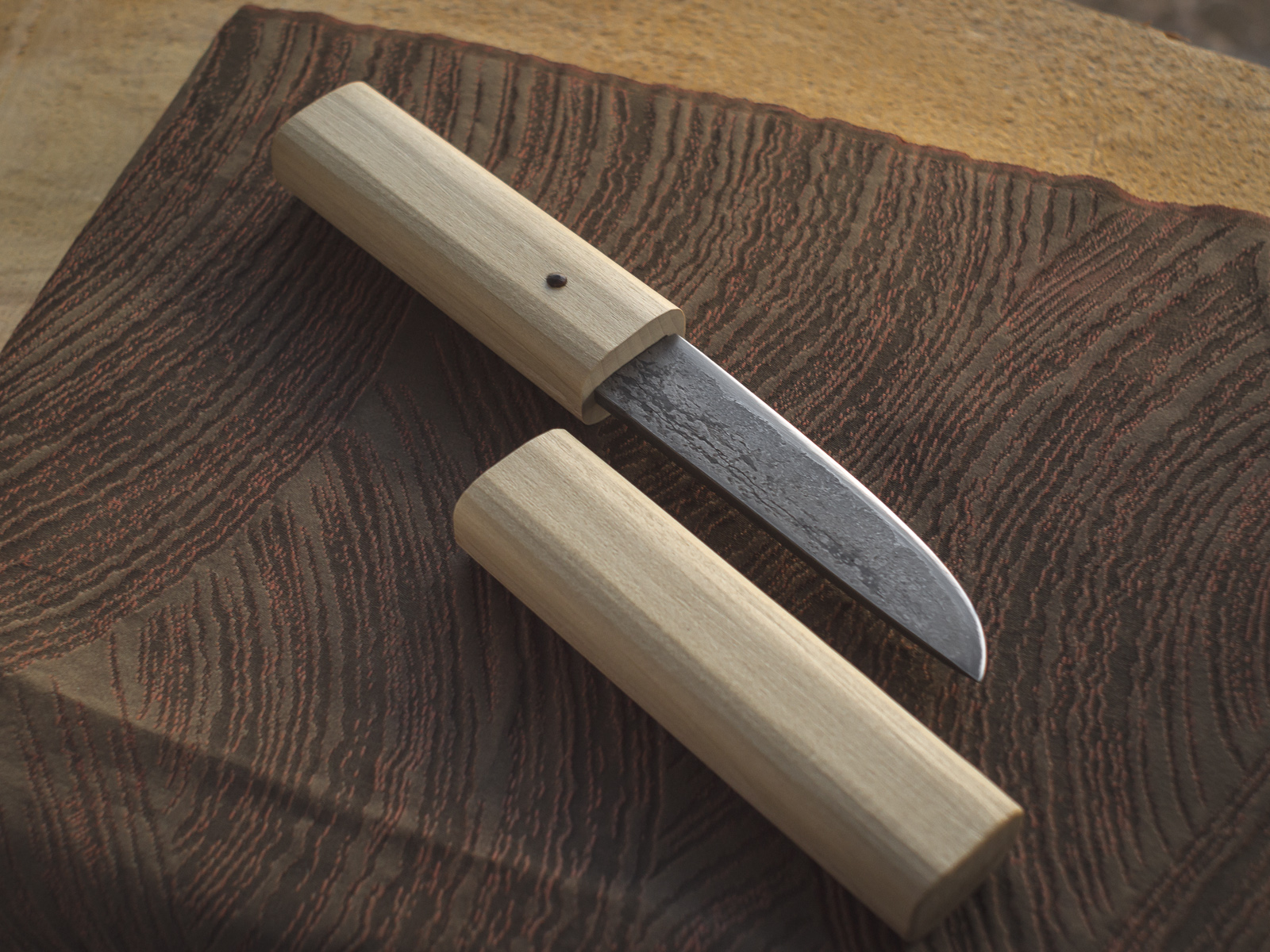
Stream Kotanto in Shirasaya
The core of this project is a charcoal-forged blade, water quenched with clay and sharpened with waterstones, an outdoor knife that has the foundation of the Japanese sword but is finished in the simple and humble style of farming and foresting tools of centuries ago. Satoyama are the managed forest areas that border the cultivated…
-

Hon-Yaki Field Nata
Nata come in various sizes and shapes, but most do the work of a light brush hatchet or heavy camp knife. Common characteristics include thick spines and heavy blades, often with single beveled edges similar to Japanese wood chisels. The hand forged blade features swordsmith style hon-yaki water quench edge hardening rather than a thin…
-

Forest Kotanto with Antique Fittings
The core of this project is a charcoal-forged blade, water quenched with clay and sharpened with waterstones, an outdoor knife that has the foundation of the Japanese sword. The aikuchi mounting is in the rustic kura style and includes antique fittings from swords carried centuries ago. Satoyama are the managed forest areas that border the…
-
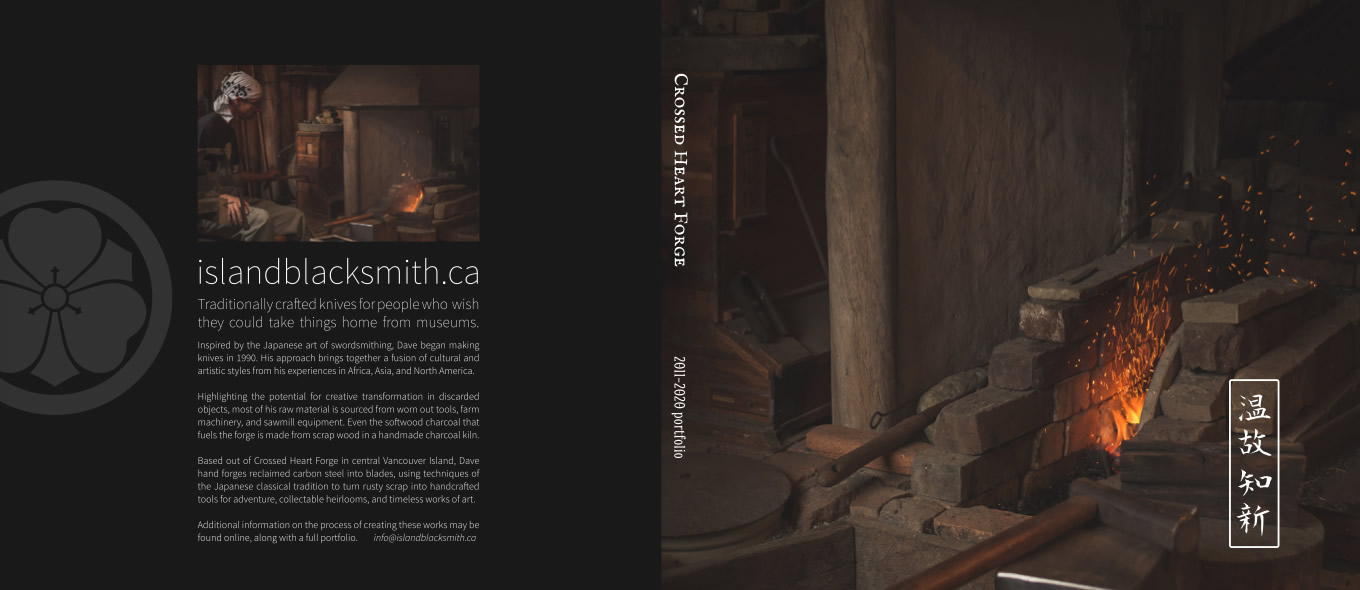
2011-2020 Portfolio Book: A Decade in Review
This documentary book project is the result of many weeks of editing and design work and can be enjoyed by the collector, enthusiast, and craftsman alike. It contains over 200 photos and highlights more than 30 knives spanning the past decade of work at Crossed Heart Forge since relocating from Japan in 2011. Hardcover, A4…
-
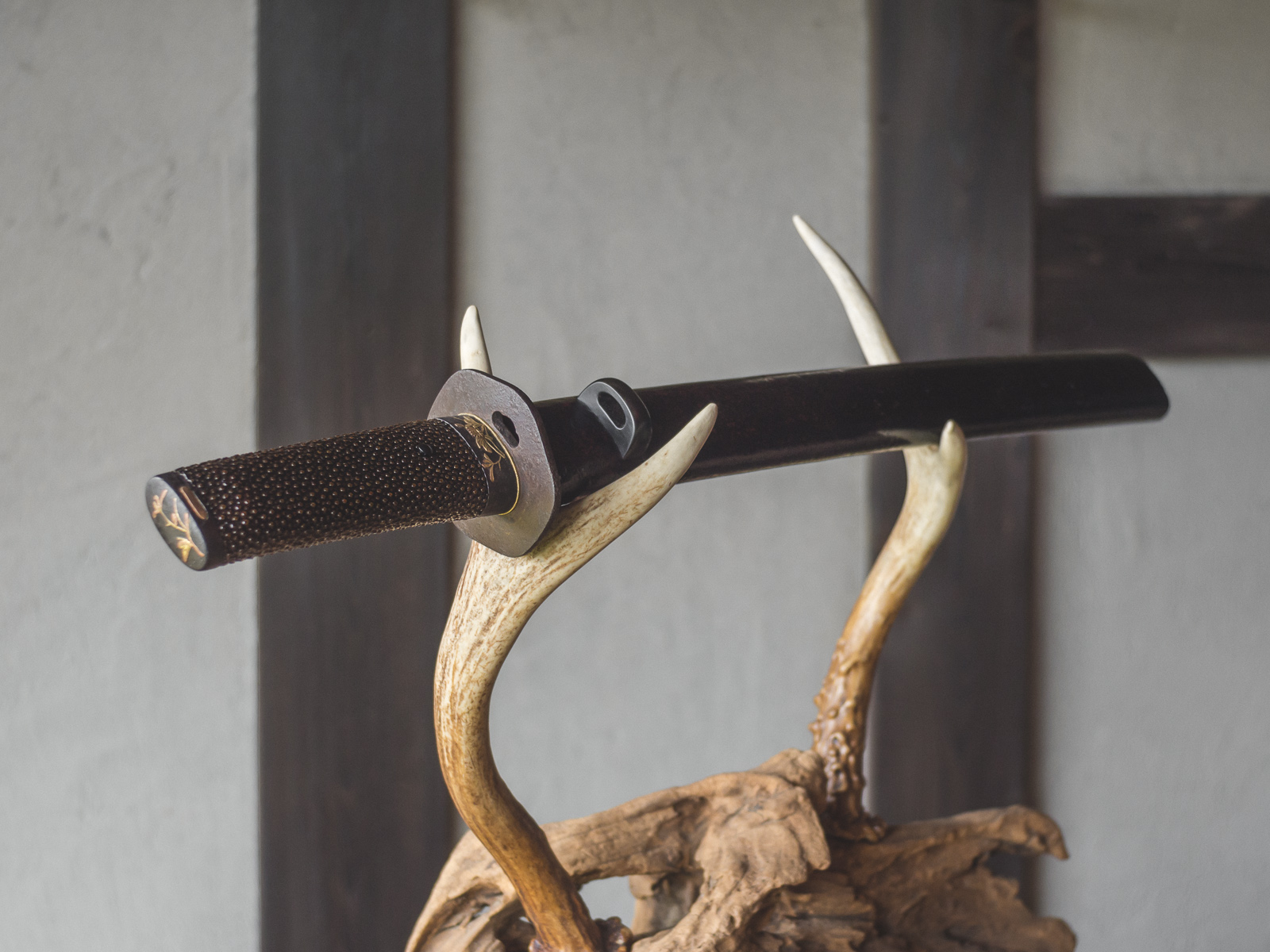
Nagatsuki Tanto
Nagatsuki (長月, pronounced “nah-gah-tsoo-key”) translates literally as “long moon”. In the ancient calendar it is a poetic name for the time around late September, possibly abbreviated from yonagatsuki meaning “night of the long moon”, or “month of the long night” depending on the reading. The idea is associated with the time of Autumn, seasonal change…
-
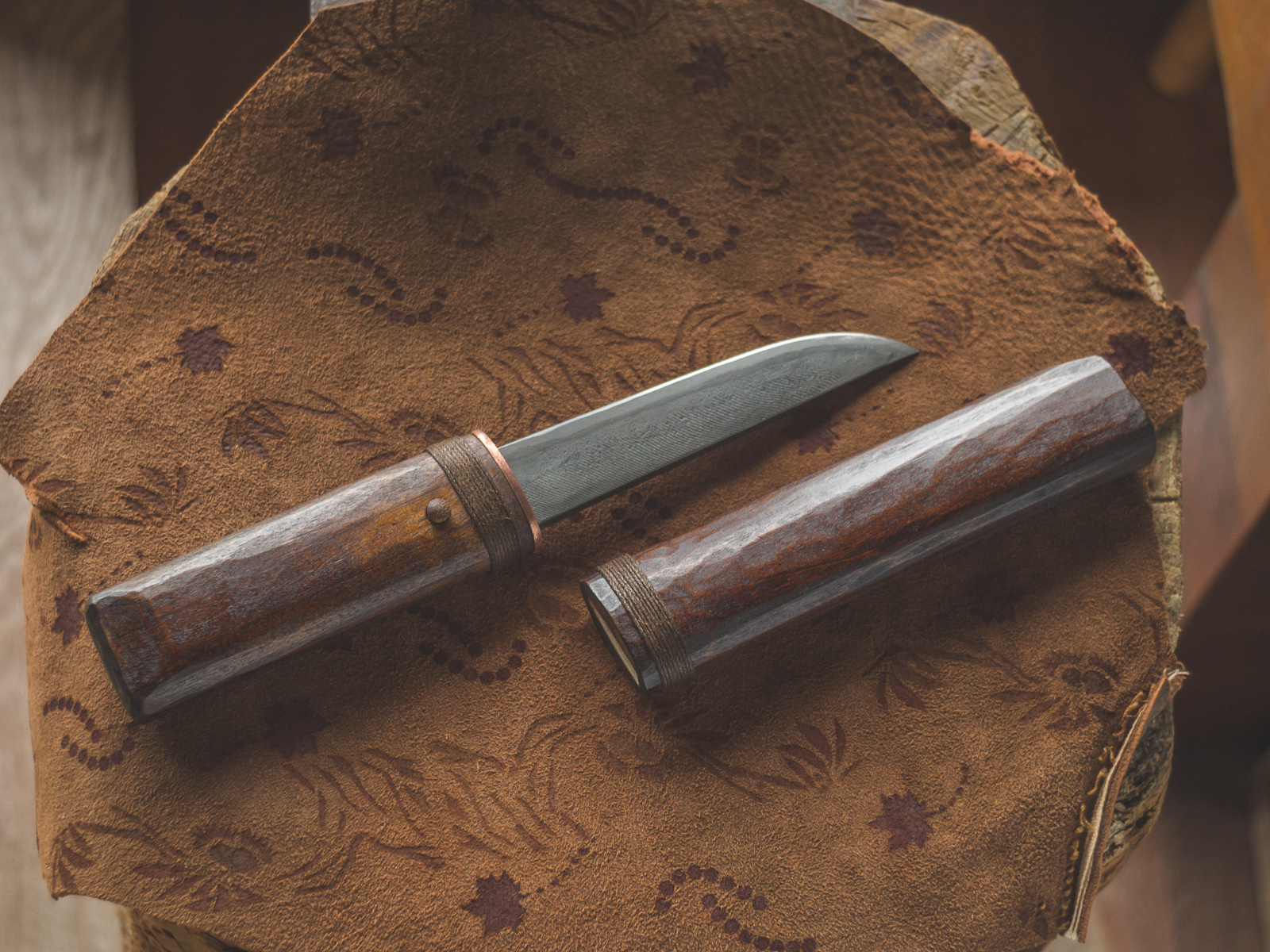
Kominka Forest Kotanto
The core of this project is a charcoal-forged blade, water quenched with clay and sharpened with waterstones, an outdoor knife that has the foundation of the Japanese sword but is finished in the simple and humble style of farming and foresting tools of centuries ago. Satoyama are the managed forest areas that border the cultivated…
-
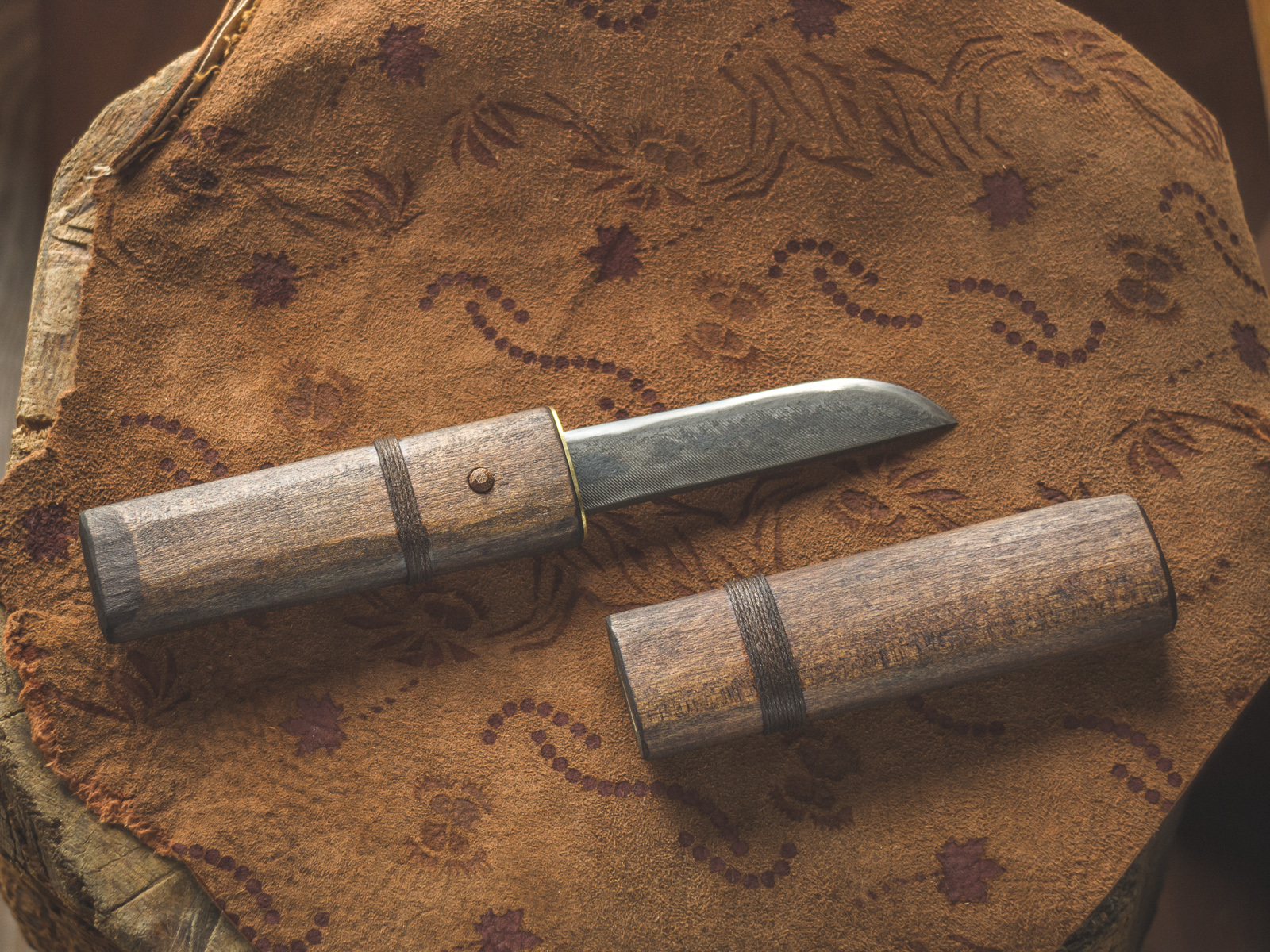
Kominka Field Kotanto
The core of this project is a charcoal-forged blade, water quenched with clay and sharpened with waterstones, an outdoor knife that has the foundation of the Japanese sword but is finished in the simple and humble style of farming and foresting tools of centuries ago. Satoyama are the managed forest areas that border the cultivated…
-

Kominka Stream Kotanto
The core of this project is a charcoal-forged blade, water quenched with clay and sharpened with waterstones, an outdoor knife that has the foundation of the Japanese sword but is finished in the simple and humble style of farming and foresting tools of centuries ago. Satoyama are the managed forest areas that border the cultivated…
-

TLDW #26 – Traditional Yaki-Ire, Hardening a Tanto
https://rumble.com/v2fcl1b-tldw-26-traditional-yaki-ire-hardening-a-tanto.html During the hardening process the clay layer causes a split second difference in cooling time which creates two different hardness areas in the same piece of steel. The edge cools faster and forms a very hard steel structure called martensite while the body cools slower and forms a very tough steel structure made of…
